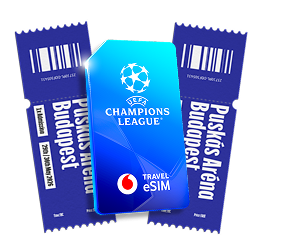It was not just Jürgen Klopp and his Liverpool players who had the thrill of lifting a trophy in Madrid on the evening of Saturday 1 June. For the very first time, another competition winner was crowned at the Estadio Metropolitano that night – eChampions League victor Chris 'NYC_Chris' Holly.
The American video gamer had triumphed in the inaugural eChampions League grand final the previous day and duly received his trophy pitchside ahead of the kick-off between Liverpool and Tottenham Hotspur – a glittering reward to go with $100,000 in prize money. “Madrid was a once-in-a-lifetime experience,” says Holly, a professional for the New York City FC esports team. “I never thought I would be at the Champions League final and especially not on the pitch before to lift the trophy in front of the crowd.”
Holly’s “once-in-a-lifetime” moment marked a significant point for the burgeoning esports realm as well. The creation of the eChampions League represented another staging post in the sector’s rapid journey from niche pursuit to mainstream popularity at a time a growing number of clubs across the continent are opening esports departments. “It’s been different because it’s the Champions League,” says Holly, whose own love of football was fed by the EA SPORTS FIFA Global series while growing up in the United States.“It was the first-ever event in the eChampions League so it was an amazing feel and great competition.”
eChampions League winner NYC_Chris
EA SPORTS FIFA 19 was the game of choice when the groundbreaking campaign began with online qualifiers in early March, before the best 64 competitors gathered the following month in Manchester for the chance to become one of eight finalists. For the eight who won through, the prize was the chance to compete for the title in Madrid on 31 May. There were quarter-final and semi-final contests before it all came down to a showdown between Holly and his Bulgarian opponent, DrNightWatch, in a final the American won thanks to a line-up flush with current and former talents – including a certain iconic Dutch playmaker. “My must-have has to be Ruud Gullit,” explains Holly. “He’s just an all-around player. He can attack, defend, jump and shoot.”
It was in 1978, the year Space Invaders was released, that Gullit signed his first professional contract; nobody then could have imagined that football clubs four decades on would be embracing the sport gaming industry as they are today. In Spain, Valencia were the first club to establish an esports division. Real Madrid have since included a new esports arena as part of their Santiago Bernabéu renovation plans, while in France, Paris Saint-Germain have separate sponsorship agreements for their esports teams, as well as their own chief gaming officer charged with player recruitment.
Even where there might have been some scepticism, there is a willingness to explore this fast-expanding realm. Not long after their president, Uli Hoeness, had said “young people are supposed to do sports on the training ground”, Bayern München declared in February this year their openness towards pursuing esports possibilities in the near future. Europe’s biggest teams, it seems, can no longer afford to ignore this new avenue for increasing name recognition, particularly among younger fans and in countries where the classic bonds of club fandom are less strong. Hence, for instance, Manchester City’s move last year to become the first Premier League club to launch a FIFA Online 4 team in China.


























